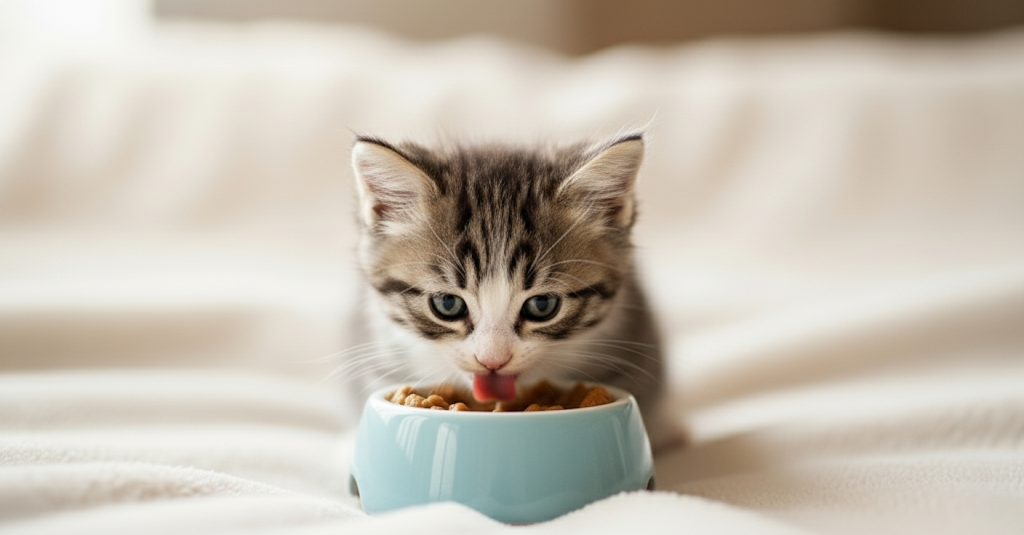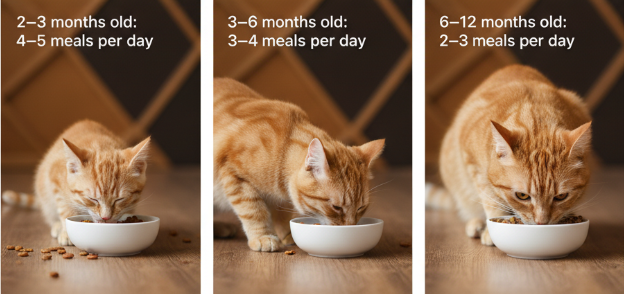
Discover the best food for your kitten with expert feeding tips. Learn how proper kitten food choices support growth, health, and energy—make feeding simple and confident.
Why Kittens Need Special Nutrition
A kitten’s first year is a period of rapid growth. Their small bodies need more calories, protein, and fat than adult cats. That’s why standard cat food isn’t suitable until they’re fully grown.
What Nutrients Do Kittens Need?
Key components in a healthy kitten diet include:
- High Protein (30–40%) for muscle and tissue development.
- Fat (15–20%) as a concentrated energy source.
- Taurine to protect eyesight and heart function.
- Calcium & Phosphorus for strong bones and teeth.
- Omega-3 (DHA) for brain and eye development.
👉 For more on balanced nutrition, check [How often should you feed your cat?].
Wet Food vs Dry Food for Kittens
Should you give canned meals or kibble? Each has its benefits and drawbacks.
| Food Type | Advantages | Disadvantages |
|---|---|---|
| Wet Food | Hydration, soft texture, palatable | Pricier, spoils quickly |
| Dry Food | Convenient, affordable, supports dental health | Low water content, less appealing for some |
| Combination Feeding | Offers balance of hydration + crunch | Needs portion control |
💡 Tip: A mixed feeding method works best for many households—wet food for hydration, dry food for convenience.
How Often Should I Feed My Kitten?

Because of their small stomachs, kittens need multiple small meals.
- 2–3 months old: 4–5 meals per day
- 3–6 months old: 3–4 meals per day
- 6–12 months old: 2–3 meals per day
Consistency matters. Don’t leave wet meals out too long, and only free-feed kibble if you track portions.
👉 If your pet is four months old, see: [Best Food for a 4-Month-Old Kitten].
Feeding Indoor Kittens: Things to Watch
Indoor kittens are usually less active, so calorie balance is crucial.
- Choose “complete and balanced” kitten formulas.
- Avoid high-carb fillers that add empty calories.
- Encourage playtime to keep weight under control.
Practical Tips for Building a Kitten Meal Plan
- Introduce new foods gradually to prevent digestive upset.
- Stick with kitten formulas until 12 months before transitioning.
- Always provide clean water, especially with dry diets.
- Track weight and activity—a healthy young cat is playful and curious.
- Consult your vet if growth seems slow or issues arise.
👉 When the time comes, read: [When & How to Switch from Kitten to Cat Food].
Final Thoughts
Feeding a kitten is about more than filling a bowl—it’s about supporting growth, energy, and overall well-being. By choosing a balanced diet, understanding wet food vs dry food for kittens, and adjusting meals as they mature, you’ll give your cat the foundation for a healthy future.
Nutrition in the first year sets the stage for long-term vitality. Stay consistent, provide quality meals, and your kitten will reward you with affection and energy for years to come.

[…] about other cat nutrition topics? Check out [Kitten to Cat Food] for a guide on kitten diets and [New Cat Owners] for raw food feeding […]
[…] Got a new kitten? → Start with our Kitten Food Guide and Vaccination Schedule in Malaysia to build a strong […]